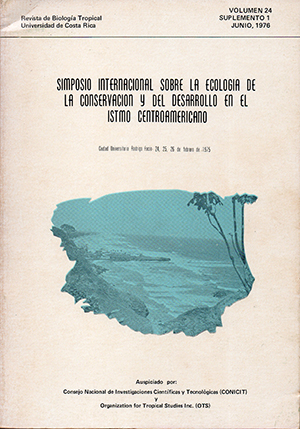Abstract
The most frequently overlooked aspect of conservation of natural resources and economic development is human cultural diversity. However, conservation and development of natural resources are basically human-oriented endeavors and all conservation and developmental efforts ought to start with a clear understanding of the varied needs of the people. In addition, cultural diversity is a natural resource that ought to be protected along with all the more commonly recognized resources of the ecosystems of which humans form an integral part. Cultural diversity in a large measure is an ecological phenomenon because such diversity includes variations in the ways different peoples perceive and utilize the environments in which they live. Thus, cultural diversity, in large measure, equates with ecological diversity. It has been well established that a high degree of ecological diversity (including taxonomic, niche, biogeochemical and other measures of diversity) is a necessary attribute of humid tropical ecosystems if such ecosystems are to remain viable over long periods of time. The current land-use trends in Central America and Panama are leading toward ever larger areas being devoted to monocultural use with sharply reduced ecological diversity that poses great dangers for the near and long terms. In addition, the resultant removal of people from rural areas results in growing social, economic and political problems, that are not being successfully met by developing nations. Not only is there a growing wastage of human resources, a weakening of the social structures, and an increasing and dangerous dependence upon monocultures oriented toward export markets, but the ecological diversity of the previous existing land-use systems are being lost. This kind of diversity is probably no less valuable to the ecological health of a nation's agriculture, forestry , and general resource utilization than is the genetic diversity of "primitive" crop plant varieties which biologists now recognize and increasingly seek to preserve as "modern" crop plant varieties become ever more simple genetically and hence ever more vulnerable to disease and other perturbations.
Developing nations often still possess a critically important ecological advantage that most industrialized nations forfeited unwittingly ... that advantage being the continued presence of human cultural, i.e., ecological, diversity. This diversity, so often ignored by the conservationists and planners and developers, is one of the most valuable attributes of a developing nation's ecological patrimony.
References
Bennett, C. E. 1968. Notes on Choco ecology in Darien Province, Panama. Antropologica, 24: 26-55.
Farnsworth, E. G., & E. B. Golley (eds.). 1974. Fragile eeosystems. Springer-Verlag. New York.
McBryde, F. W. 1945. Cultural and historial geography of southwest Guatemala. Smithsonian Inst., Inst. Social Anthropology, Pub. No. 4.
Nietschmann, B. 1973. Between land and water. Seminar Press. New York.
Odum, E. 1969. The strategy of ecosystem development. Scienee, 164: 262-270.
University of California, Los Angeles, Latin American Center 1968. Statistical abstract of Latin America, Los Angeles.
##plugins.facebook.comentarios##

This work is licensed under a Creative Commons Attribution 4.0 International License.
Copyright (c) 1976 Revista de Biología Tropical


